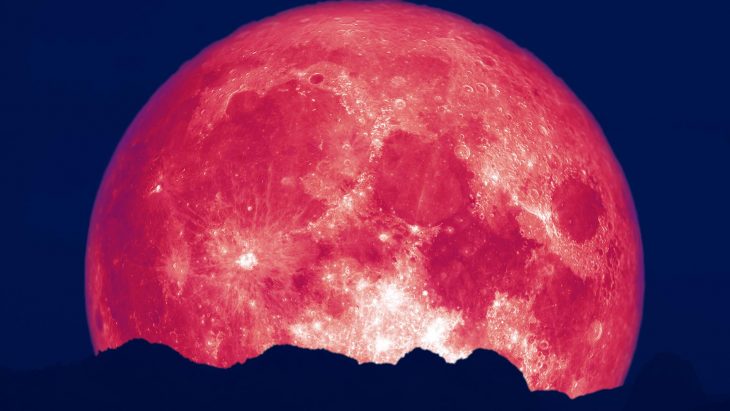Nearly a month after the world witnessed a Supermoon, Bloodmoon and Total Lunar Eclipse followed by the Ring of Fire Solar Eclipse, another celestial event is set to occur in the night sky — the Strawberry Moon. The Strawberry Moon, which will appear on June 24, is the first full moon after the Summer solstice, when it reaches its full phase.
While the Moon is bigger than its normal size due to proximity to Earth in its orbit, the June full moon is not considered a supermoon, like the one observed in May.
Strawberry Moon marks the last full moon of the spring season and the first of the summer season. The summer season in the northern hemisphere began on Monday when places north of the equator experience the longest day of the year. While stargazers will see Strawberry Moon in the night sky on June 24, the next full moon known as Buck Moon will be seen on July 24. (Photo: Getty)
While stargazers will see Strawberry Moon in the night sky on June 24, the next full moon known as Buck Moon will be seen on July 24. (Photo: Getty)
Why the name Strawberry Moon?
The celestial phenomenon has received its name from ancient American tribes who marked the full moon with the beginning of the harvesting season for strawberries. June’s full name is denoted by different names in different parts of the world. In Europe it’s known as the Rose Moon, which marks the harvesting of roses. In the Northern Hemisphere, it is referred to as the Hot Moon as it coincides with the beginning of the summer season north of the equator.
The Strawberry moon will appear for more than a day in the night sky, unlike the normal moon when the full phase lasts for a day. Normally, there are three full moons between the Summer Solstice and Equinox. However, in 2021 there are four such phases.
 Strawberry Moon marks the last full moon of the spring season. (Photo: Getty)
Strawberry Moon marks the last full moon of the spring season. (Photo: Getty)
Full Moon phases in 2021
The moon takes nearly 29.5 days to complete a revolution around the Earth, during which it reaches its full phase, and a new moon takes shape. The coincidence of the summer solstice with the Strawberry Moon comes once in 20 years.
While stargazers will see Strawberry Moon in the night sky on June 24, the next full Moon known as Buck Moon, will be seen on July 24, followed by Sturgeon Moon on August 22 and the last full moon of the season, Harvest Moon, on September 20. The equinox will occur on September 22, when the day and night are of equal length.







Leave a Reply